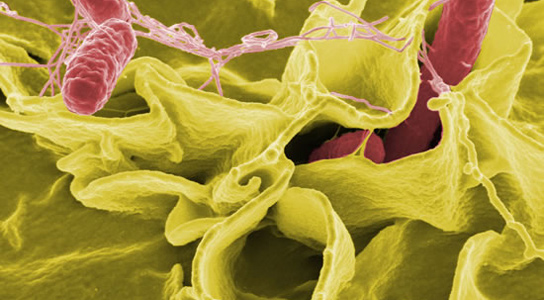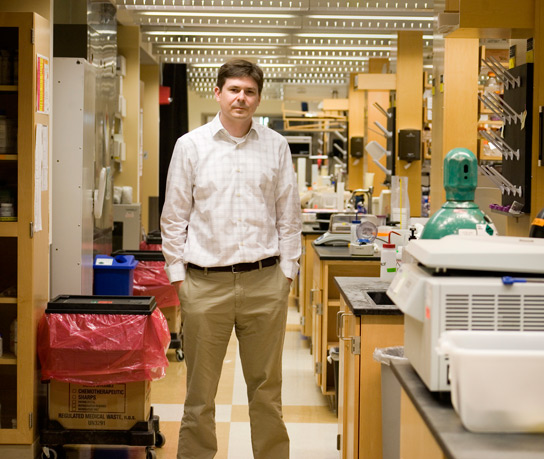Complex Synthetic Biology Circuit Can Detect Four Different Molecules
October 9, 2012

MIT biological engineers created new genetic circuits using genes found in Salmonella (seen here) and other bacteria. Image: NIH
Synthetic biologists design circuits using genes as interchangeable parts, allowing them to perform new functions, such as sensing environmental conditions. However, the overall complexity that can be achieved in such circuits has recently been limited by the difficulty in assembling genetic components that don’t interfere with each other.
Researchers have been trying to use proteins that control only parts of a synthetic circuit and that don’t hinder others. Christopher Voigt and his team have developed circuit components that don’t interfere with each other, allowing them to produce the most complex synthetic circuit ever built. The scientists published their findings in the journal Nature.

Biological engineer Christopher Voigt Photo: M. Scott Brauer
The circuit they designed integrates four sensors for different molecules, and such circuits could be used inside of cells to precisely monitor their environments. It was incredibly complex stitching together all of these pieces, states Voigt, co-director of the Synthetic Biology Center at MIT. Larger circuits would require computer programs, which are now being developed, and should allow the combination of hundreds of such circuits.
Voigt had previously used bacteria that could respond to light and capture photographic images, and others that could detect low oxygen levels and high cell density, conditions which are found in tumors. Most of his projects use a small handful of known genetic parts that are repackaged over and over again.
In order to expand the number of possible circuits, the researchers used the bacterium salmonella, which has a cellular pathway that controls the injection of proteins into human cells. It’s a tightly regulated circuit, which makes it a good candidate as a synthetic circuit.
The pathway is made up of three components, an activator, a promoter and a chaperone. A promoter is a region of DNA where proteins will bind to initiate gene transcription. An activator is such a protein, but these require a chaperone protein before they can bind to DNA in order to begin DNA transcription.
The scientists found 60 different versions of this pathway in other bacteria, and found that most of the proteins involved were different enough so that they wouldn’t interfere with one another. They did discover a small amount of crosstalk, so they used directed evolution to reduce it. This trial-and-error process involved mutating a gene to create thousands of similar variants, and testing them for the desired trait. The best candidates are then mutated and screened once again, until the optimal gene is created.
The researchers are applying their work to create a sensor that will allow yeast in an industrial fermenter to monitor its own environment and adjust its output accordingly.
No comments:
Post a Comment